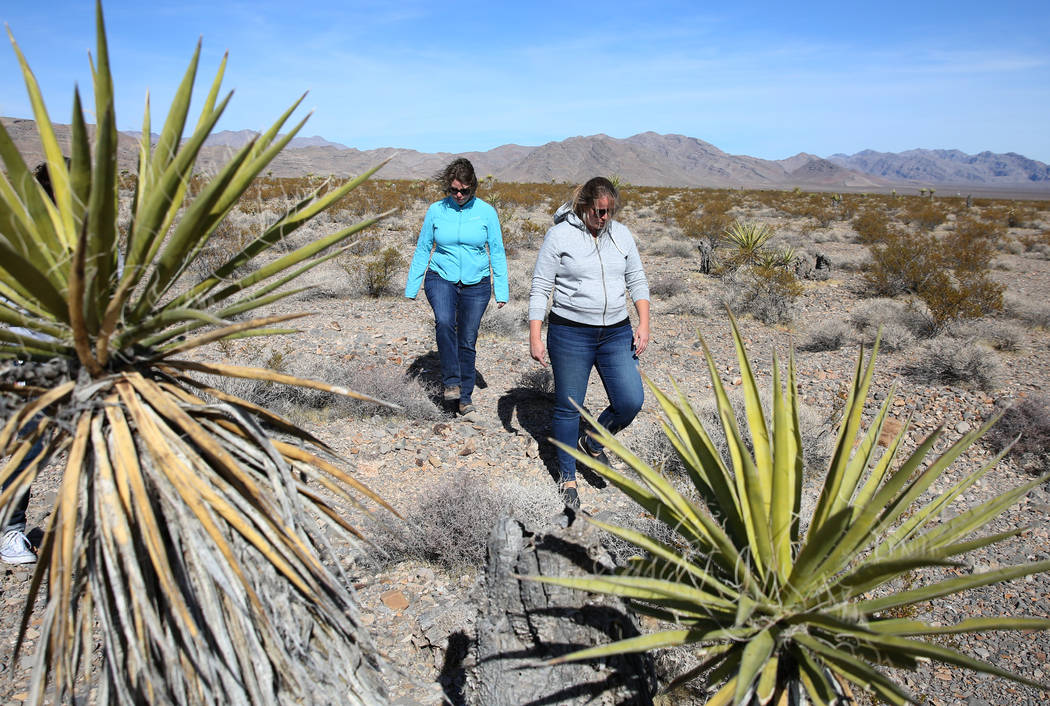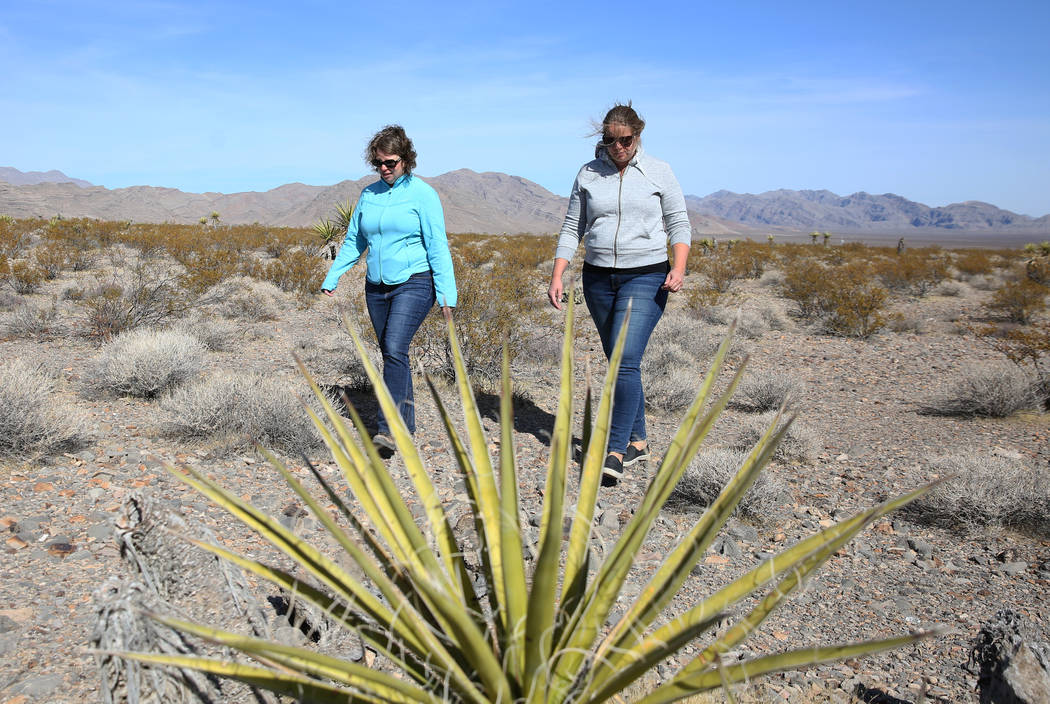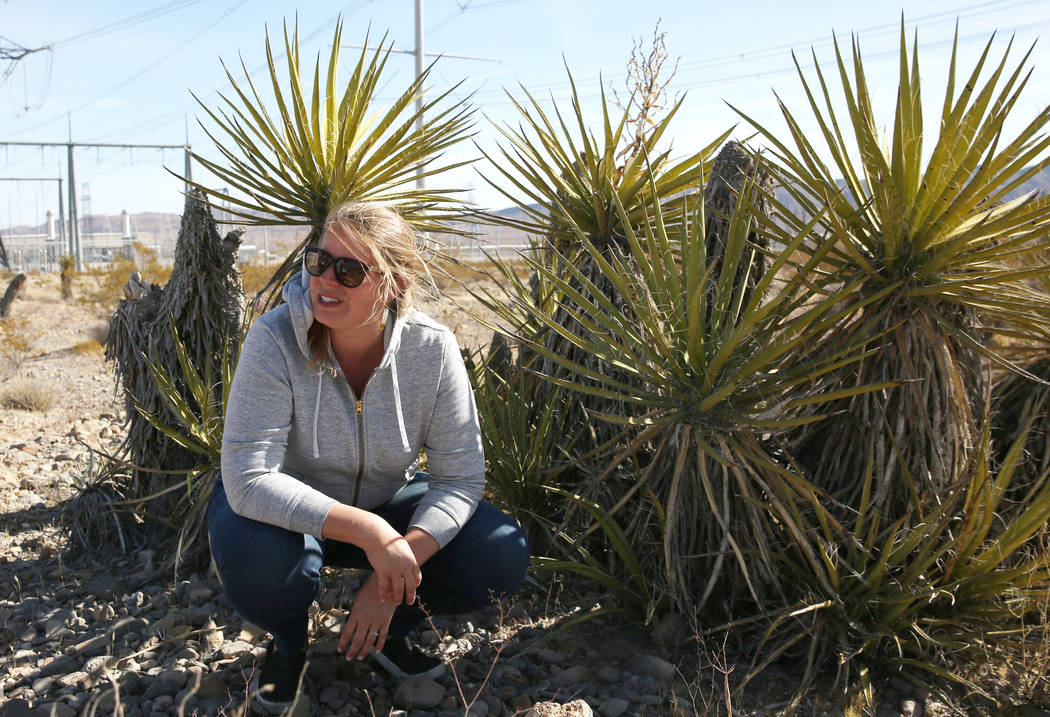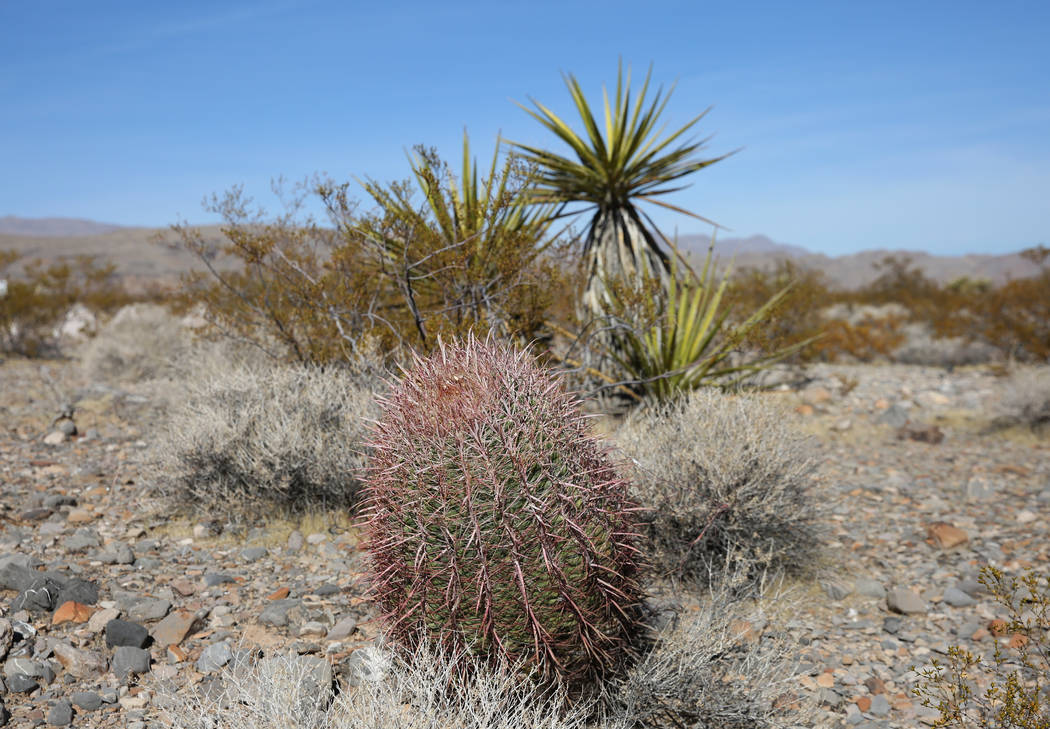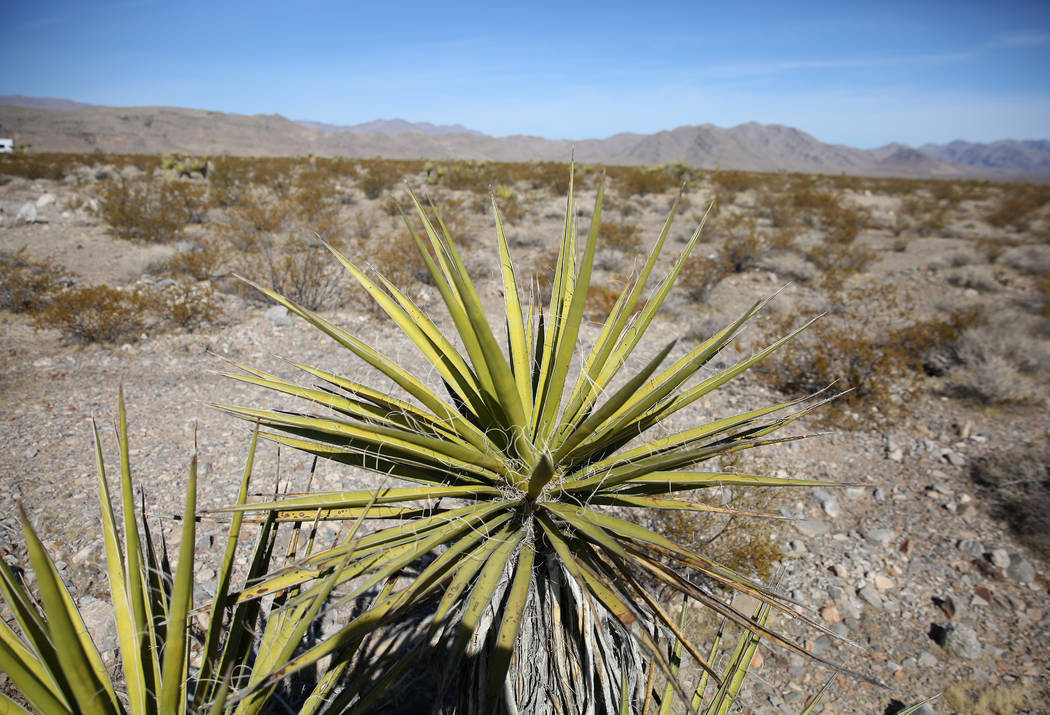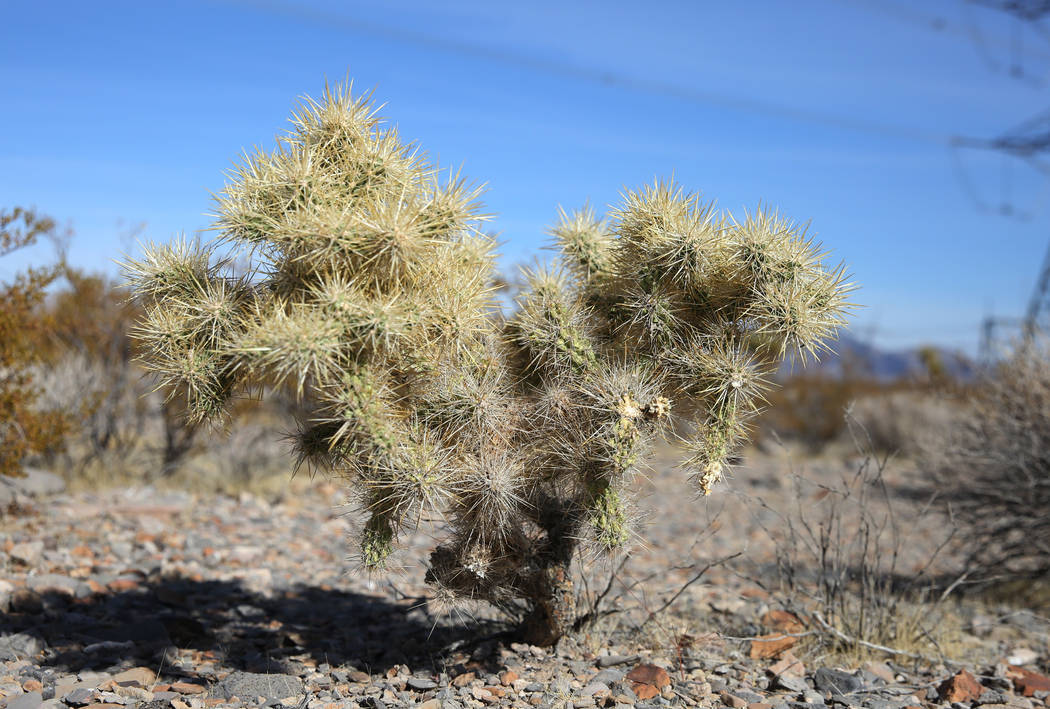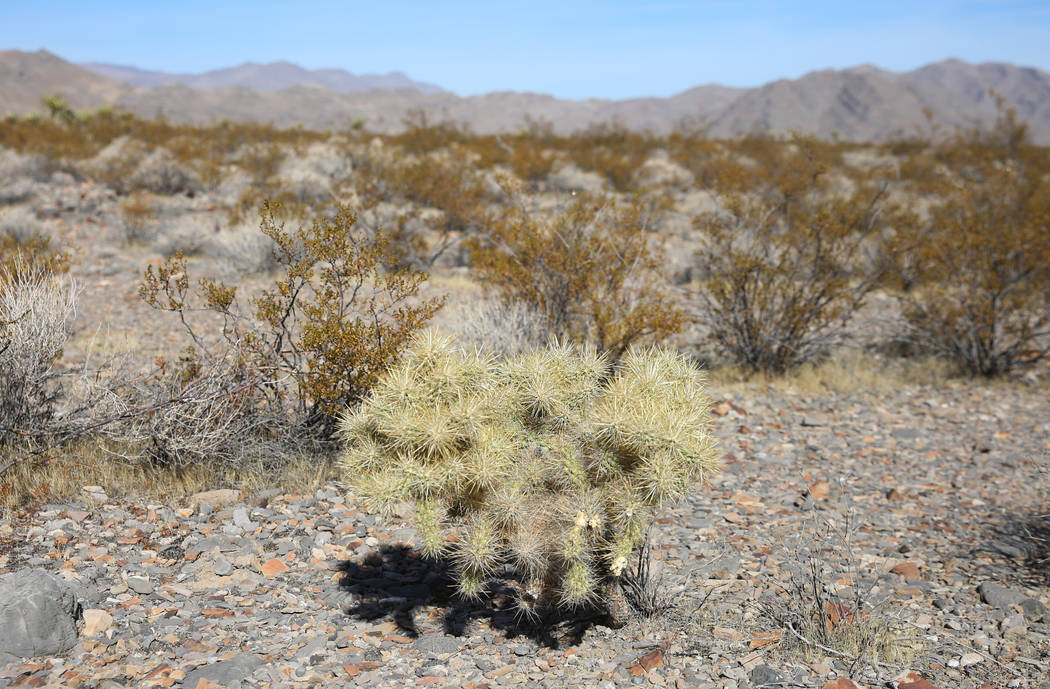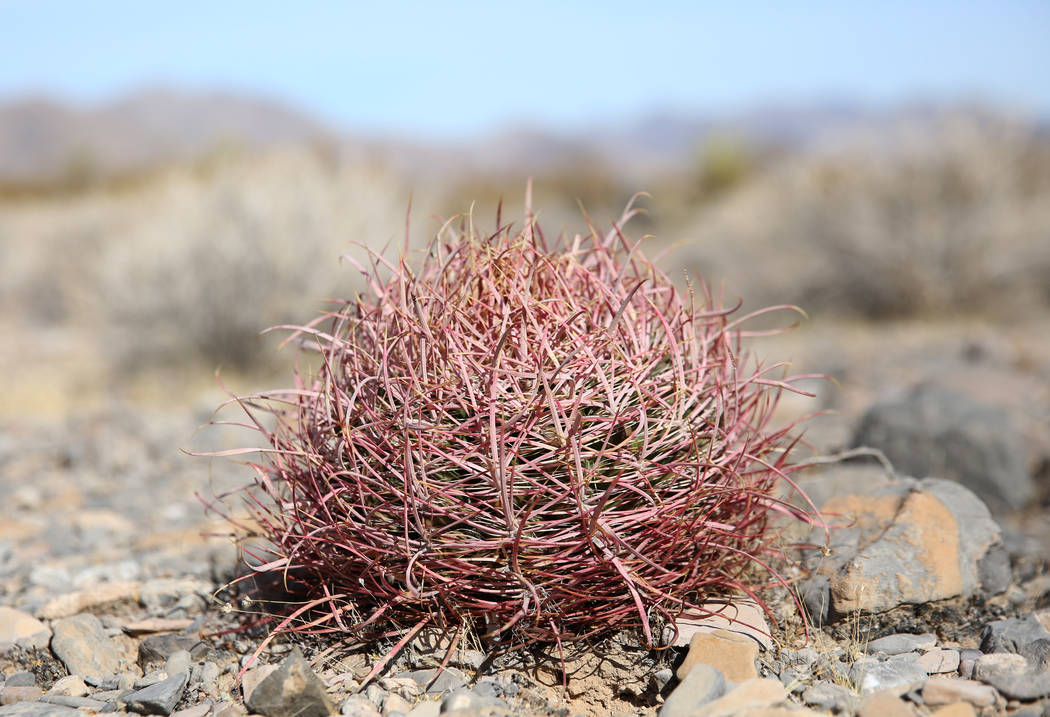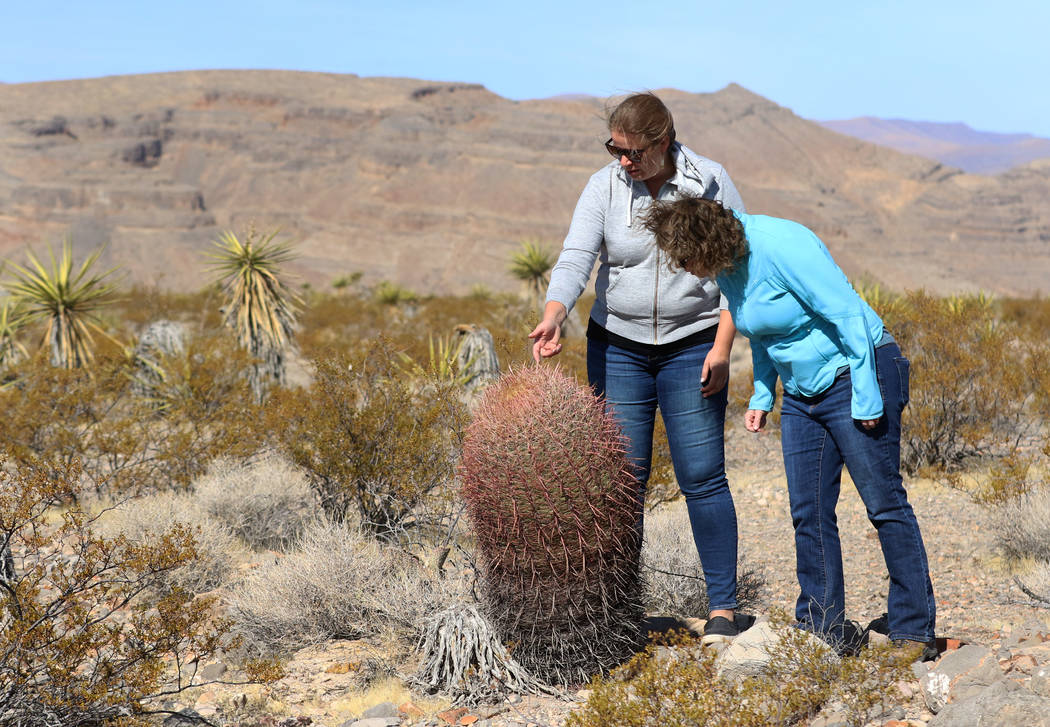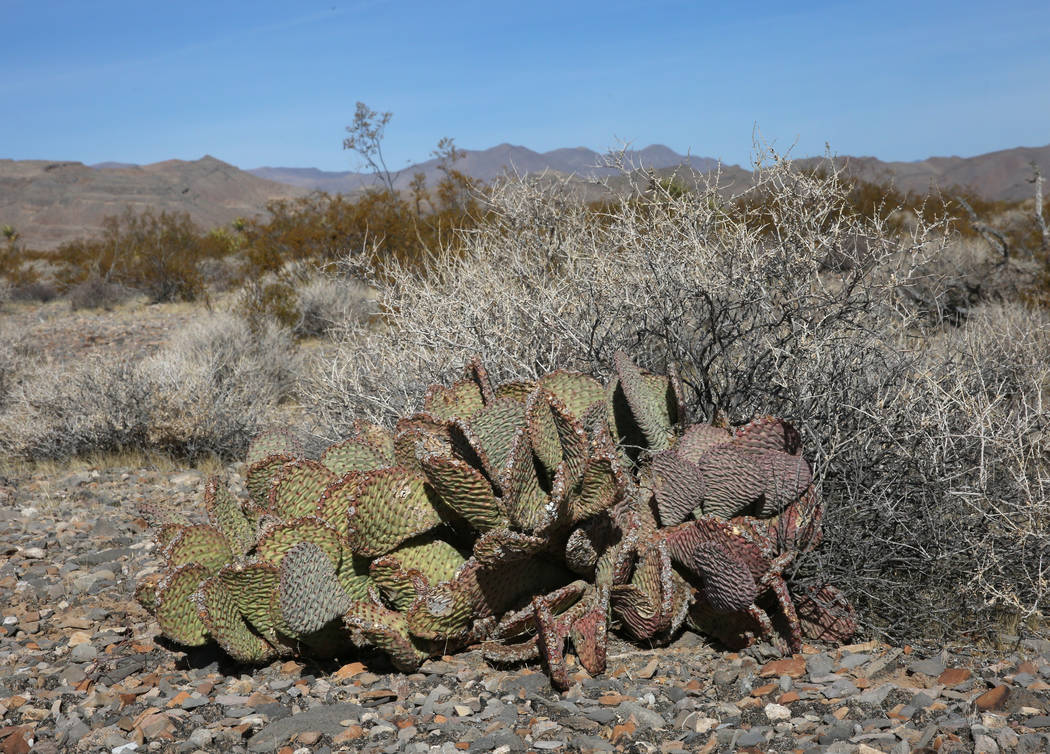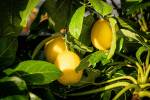Thousands of yucca, other desert plants for sale this weekend
The pressures of succeeding in a society set up to take advantage of the weak and disadvantaged can feel crushing. It’s hard not to feel like a cog in an unforgiving machine — work, errands, social obligations and an increasingly polarized political environment foster an oftentimes overwhelming ethos of helplessness and cynicism.
So you might as well buy some plants.
Thousands of the Mojave Desert’s finest flora are facing eviction and looking for a new home. A 712-acre plot of public land northeast of the Las Vegas Valley will soon join the rest of its neighborhood as a solar energy development, forcing its resident yucca, cacti and shrubbery to put down roots elsewhere or stare down a demolition crew.
Enter the Bureau of Land Management, which is hosting a plant sale this weekend at the site, located just north of where U.S. Highway 93 splits off from Interstate 15. The size of the desert plot and the roughly 40,000 plants on site likely make this the biggest native plant sale the bureau has held, BLM spokeswoman Kirsten Cannon said. The plant sale is open to the public from 8 a.m. to 2 p.m. on Saturday and Sunday.
The plants are numerous and dirt cheap, but you’ve gotta dig them up yourself. Bring gloves, a shovel, some method of transport and possibly friends/family for help.
“It’s kinda gonna be like a treasure hunt,” Cannon said.
Beavertail, hedgehog, barrel, cottontop and cholla cacti, as well as yucca, creosote and other shrubs all are up for grabs. Prices vary from $3.60 to $14.40 per plant, depending on the species.
“If you can move it, you can take it,” said Lara Kobelt, natural resource specialist for the bureau.
The sale presents a unique opportunity to bring home a piece of the desert that is otherwise off-limits to the public: harvesting Mojave yucca, Joshua trees and cacti from public lands is illegal, Kobelt said. Such removal is only permitted at BLM sales, like this one, where the plants “would otherwise be destroyed,” a BLM release said.
These native species require little water or maintenance, or as Kobelt puts it, “they do well with neglect.” They are used to the arid desert, support local pollinators and pose no risk as an invasive species.
This is their home, after all.
“You saw where it grew up, and then you get to have it in your yard and see it bloom,” Kobelt said.
Contact Mike Shoro at mshoro@reviewjournal.com or 702-387-5290. Follow @mike_shoro on Twitter.
Plant permits
Permits for the plants will be issued at the site, but only to those with a Nevada license or ID. They're not for resale and there's a limit of 15 total cacti or yucca and 15 total other plants per household.
The plant sale is open to the public from 8 a.m. to 2 p.m. on Saturday and Sunday. Plants not sold on those days will be available to commercial landscapers from 8 a.m. to 2 p.m. on Monday.
Cash or checks are required. No credit cards will be accepted.



